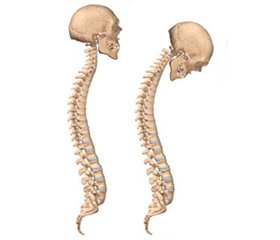Журнал «Боль. Суставы. Позвоночник» 2 (18) 2015
Вернуться к номеру
Duality of Genesis of Osteopenic Syndrome in Patients with Central Form of Ankylosing Spondylitis Complicated by Gastroesophageal Reflux
Авторы: Zazdravnov A. - Kharkiv National Medical University, Kharkiv, Ukraine
Рубрики: Ревматология, Травматология и ортопедия
Разделы: Медицинские форумы
Версия для печати
Статья опубликована на с. 100-101
Introduction. Ankylosing spondylitis (AS) is a frequent (0.2–2 % in the population) rheumatic disease with systemic extraarticular manifestations. The main clinical form of the AS is the central form. Patients with central form of AS suffered by disorders in the cervical and thoracic spine. These changes negatively affect the localization and the function of the neck and chest cavity, including the esophagus. It was found (on the basis of own previous studies) the clinical and endoscopic signs of gastroesophageal reflux (GER) were present in 3/4 patients with central form of the AS. Another frequent systemic manifestation of AS is osteopenic syndrome (OPS). OPS observed in 77–85 % of patients with AS. These disorders (GER and OPS) contribute to the progression of functional impairment and disability in patients with AS.
Aim. To investigate the mechanisms of formation of OPS in patients with central form of AS complicated by GER.
Materials and methods. 31 patients with AS complicated by GER were examined (main group). GER manifests a few years after the debut of the AS in all patients. Proton pump inhibitors (PPI) used to treat GER in the patients of main group. 20 patients with AS without GER have formed comparison group. Bone mineral density was studied by ultrasound densitometer Ahilles Express. Statistical analysis was performed by parametric statistics. Reliability of differences was assessed by Student t–test. The relations between the qualitative attributes were investigated by calculating of the coefficient of association Yule — Q.
Results and discussion. OPS was detected in 25 (80.6 %) patients of the main group and in 14 (70.0 %) persons of the comparison group. Reliable differences in frequency of OPS between patients from main group and patients from comparison group have not been revealed. On the second stage of the study the main group of patients was divided into two subgroups (A and B) depending on the duration of PPI therapy. 20 patients received PPI less than 3 years (mean duration of using — 1.1 ± 0.6 years) were included in subgroup A. 11 patients received PPI more than 3 years (mean duration reception 4.1 ± 1.0 years) and they formed subgroup B. OPS was detected in 17 (85.0 %) patients from subgroups A and in 8 (72.7 %) patients from subgroup B. Index Z in patients of the subgroup A was –0.610 ± 0.088, index Z in patients of the subgroup B was –0.850 ± 0.113. Reliable differences in the index Z between the two groups of examined patients were absent (p > 0.05). However, the index T in the subgroup B (–2.700 ± 0.205) was significantly (t = 4.080, p < 0.001) lower than in the subgroup A (–1.720 ± 0.120). Analysis of relations between the prolonged use of PPI in patients with AS complicated by GER, on the one hand, and OPS, on the other hand, revealed medium strength association (Q = +0.360, p < 0.05).
Conclusion. Prolonged use of PPI in the treatment of GERD in patients with central form of AS enhances the expressivity of OPS. In my opinion, this situation is a result of occurrence of the calcium malabsorption phenomenon in hypoacid conditions. Thus, doctor should prescribe an additional antiosteoporotic drugs in the treatment of GER by PPI in patients with AS.

